
Dear Members:
For the past several years, we have used the popular email marketing company, Constant Contact, to distribute our newsletter electronically each month. They have told us on a few occasions that none of their more than 500,000 customers "worldwide" comes close to us in terms of two key statistics: Open rate and click-through rate. Proportionately, three times more people open our emails and click through to our newsletters than any of their other customers. This is pretty amazing.

One key reason we believe our open- and click-through rates are high is because we heavily involve our readers in every issue. We ask for"and we respond to"your suggestions. The feedback we receive every month tells us how much you appreciate our newsletter; how much you look forward to each issue; and often includes suggestions and ideas for future newsletters. And yes, we occasionally receive complaints and respond accordingly.
Last month, members particularly liked hearing about the significant BOB member response to the HCSC Blue Cross Blue Shield policy change on proton reimbursement and many asked to be kept informed on any new developments "none yet". Requests for the updated PowerPoint presentation, which we announced last month, were at record levels.
Readers often ask where Deb and I get the information we use in the BOB Tales each month. We have several sources including: Online and hard-copy magazines "Dr. Charles Myers Prostate Forum, Johns Hopkins Prostate Health Alerts, ShareCare.com, Men's Health, Bottom Line Personal, etc."; Google Alerts on multiple subjects relating to prostate cancer and proton therapy; articles and information sent by members; and newly released books on prostate cancer.
We work hard to keep the information fresh and to continuously improve the BOB Tales and I hope it shows. When we first started publishing a monthly newsletter almost 14 years ago, my biggest worry was that we'd run out of material to write about. That never happened. In fact, one of the biggest problems Deb and I have each month is keeping the newsletter down to about 20 pages.
Please keep the feedback coming. Tell us what you'd like to see more of, or less of, in the BOB Tales. We welcome your comments and suggestions. Just send an email to: [email protected].
Bob Marckini
To print the BOB Tales newsletter or view the newsletter with a larger font size, click here for the PDF file.
in this issue
- Proton therapy for breast cancer shows 97% survival outcome
- Childhood cancer survival rates up from 20% to 80%
- BOB reunion in Albuquerque, NM rescheduled
- Loma Linda University Health booth/BOB reunion at RV tent show in Quartzsite, AZ
- Diagnosed in his 40s, two months before wedding
- New way to spread the word and educate others about proton
- Spend a week in Palm Springs and support proton research at the same time
- Foods that may help prevent prostate cancer
- Ebola explained
- Flu season worse for some
- Everything you ever wanted to know about proton therapy
membership

We have 7,268 members; we added 61 new members last month. We have members from all U.S. states and 39 countries. We recently found that we have members from Ireland, Iceland, and Norway. Members represent all operating proton centers in the U.S. as well as four proton centers in Europe and Asia.
news report
Proton Therapy for Breast Cancer Shows 97% Survival Outcome
In the first and largest study of its type, the latest data from a clinical trial at Loma Linda University Cancer Center reveals excellent survival rates and cosmetic outcomes when proton therapy is used on patients with early stage, invasive breast cancer.
The phase-two clinical trial followed 100 patients for an average of five years following proton treatment. Results showed that the recurrence-free survival was 97 percent with minimal side effects to the breast, lungs and heart. The cosmetic results as assessed by patients and their physicians were good to excellent in 90 percent of cases.
Most women with early stage breast cancer choose the current standard of treatment"surgery"to remove the tumor, followed by photon "X-ray" radiation over the entire breast. In the Loma Linda study, the proton beam was directed only to the site of the tumor. "This significantly reduced radiation exposure to the heart, lungs, and other parts of the body," said David Bush, M.D., Vice Chairman of the Department of Radiation Medicine at LLUMC and the study's principal investigator. "Clearly this is good news for breast cancer patients," he said.
Childhood Cancer Survival Rates Up From 20% to 80%

Last month, we reported on a controversial case involving little Ashya King in the UK. His parents were jailed for removing him from a UK hospital and taking him out of the country to be treated with protons for his stage-4 medulloblastoma, a malignant brain tumor. Public pressure caused UK authorities to not only release the parents, but the EU healthcare system, NHS, agreed to fully cover the treatment; Ashya is undergoing proton treatment in Prague, Czech Republic.
In the 1950s, only 20 percent of pediatric cancer patients survived their diagnosis. Today the survival rate is 80 percent, thanks in great part to proton therapy. Because protons can be directed so precisely to the target, minimal to no collateral damage is done to the patient. And when that patient is a very young child, this benefit is magnified manyfold. Collateral damage from radiation often causes life-altering side effects, such as brain damage and stunted growth. Also, excess radiation to healthy tissue can result in secondary cancers later in life.
While all proton centers in the U.S. treat pediatric cancer patients, only a small proportion of pediatric cancer patients is being directed to proton therapy, according to Dr. Julie Bradley at the University of Florida Proton Therapy Institute. Although the percentage of pediatric patients having proton therapy is still small, the number is growing as more proton centers open and the benefits of proton therapy are more widely understood by parents and caregivers.
ActionNewsJax.com reported a story about Kathleen Patti, who at seven years old beat cancer with conventional radiation. Unfortunately she suffered a secondary cancer later in life. But that was successfully treated with protons. Today, at age 18, Patti is cancer free. For Patti, two rounds of cancer were not something to fear, but to overcome. "I can't imagine my life without cancer; it made me the person I am today," she said. Patti is among a growing number of children who are surviving cancer with the help of proton therapy.
New Proton Center Planned for South Florida
Baptist Health South Florida recently announced plans to build a proton treatment center at its Miami Cancer Institute. It is hoping to attract patients from South Florida as well as the Caribbean, South America, and Central America.
Completion is scheduled for 2016.
Proton Therapy Coming to Australia
Dozens of Australians travel to the U.S. each year for proton therapy. And for years we have been hearing from our Aussie BOB members that they wished a proton center would be built in their country. Well, it looks like their wish is coming true.
A recent news article announced that an alliance has been formed to bring a proton treatment center to Brisbane. Proton Therapy Australia and Mater Health Services have announced they plan to treat the first patient in Australia in 2017.
Proton Therapy in Russia
Proton accelerators were recently installed at hospitals in Pushchino and Protvino, suburbs of Moscow. This technology is based on a small, inexpensive particle accelerator first developed at the Lebedev Physical Institute by scientist Vladimir Balakin.
The future radiation therapy "will shift primarily to the use of proton units in the next 10 to 20 years," according to Balakin.
Click here for more information.
events
Proton Patient / BOB Member Reunion | Albuquerque, NM
When: Rescheduled: Early 2015. More details will follow.
Where: Sandia Presbyterian Church, 10704 Paseo del Norte N.E., Albuquerque, NM
Details: Dr. Lynn Martell, D.Min, Director of Special Services at Loma Linda University Health, will discuss exciting news about Loma Linda, new clinical trials with the use of proton therapy, and detailed plans to transform the campus as part of Vision 2020.
Bring your spouse. This is also an excellent opportunity to invite friends who have been diagnosed with prostate cancer. Light refreshments will be served.
More information email Dr. Lynn Martell at [email protected].
Movember Mondays at Loma Linda
In honor of the national observance of "Movember," the department of radiation medicine at Loma Linda University Cancer Center will be providing light refreshments and giveaways every Monday during the month  of November from 2:00 – 4:00 p.m. in the Proton Treatment Center, B level waiting area.
of November from 2:00 – 4:00 p.m. in the Proton Treatment Center, B level waiting area.
What is "Movember?"
Movember is a movement that started in 2004 that involves the growing of moustaches during the month of November to raise awareness of men's health issues. By encouraging men to get involved, Movember aims to increase early cancer detection, diagnosis, and effective treatments, and ultimately reduce the number of preventable deaths.
RV Tent Show / Loma Linda University Health Booth / BOB Reunion | Quartzsite, AZ
Every January, as many as one million people, mostly in RVs, converge on the sleepy town of Quartzsite, Arizona "just 20 miles east of the California border", for the Quartzsite Sports, Vacation & RV Show.
2015 will be different.
Representatives of Loma Linda University Health, including Dr. Lynn Martell, D.Min, Director of Special Services, and Aaron Laudenslager, Senior Development Officer, will be hosting a booth for the first time at this year's event. BOB member and RV enthusiast, Vern Haase of Omak, WA, has volunteered to help man the booth and is looking for other BOB members to volunteer, or simply attend the event and reunite with other proton patients and their families.
Live in the area and want to help?
"Team Proton""Dr. Martell, Aaron Laudenslager, and Vern Haase, are looking for volunteers to help man the booth and pass out information about proton therapy to attendees. You do not have to have been treated at the Loma Linda University Health Proton Treatment Center to volunteer. Interested parties can call Vern Haase at 509-826-4931 or email [email protected].
This is a great new way to spread the word about proton therapy "and the 200 tumor sites that are being treated" to a community of mostly older men and their families.
When and where?
When: The 32nd Annual Sports, Vacation & RV show will take place January 17-25, 2015, 9:00 a.m. to 5:00 p.m. daily.
Where: 700 S. Central, Quartzsite, AZ 85346
Details
- Free admission
- 20-acre facility
- free parking
- 69,000 sq. ft. fully carpeted indoor exhibit area
- midway "outside" RV live-aboard exhibit area
- walking distance to major rock and gem shows.
National Proton Conference | 2015

Registration is open for the 3rd Annual National Proton Conference"Creating a Better Future for Cancer Patients Worldwide. The event takes place in Washington, D.C., March 30 through April 2, 2015. More information will follow.
spotlight on members
Member Stories
Diagnosed in his 40s, two months after wedding day!
BOB member Tove Sorensen was treated with proton therapy for his prostate cancer at Loma Linda University Health Proton Treatment Center in 2013. He tells us, "I'm feeling great, my PSA continues to fall, and I'm so happy I chose proton treatment versus the other options that often come with significant side effects."

Tove was particularly interested in proton therapy because at the time of his diagnosis, he was just 49 years old, and had married the love of his life, Terri, just two months prior. "I was very worried about side effects," Tove said. "I had read and heard from others that side effects from proton therapy are minimal compared to other treatment options. After learning more about proton the decision was easy."
It may be of interest to point out that one of Tove's former jobs involved selling penile implants to urologists for patients who had undergone prostatectomies and were suffering from erectile dysfunction. Ironic?
"I followed a good friend of mine through his residency and fellowship in urology" he was originally going to perform the robotic surgery on me. Then my brother, who is also a doctor, encouraged me to check out proton therapy," Tove told us. "I trusted him. Since then, he has encouraged many more men to consider proton therapy and those who have are all doing very well"like me."
A prayer in the shower
In late 2013, Terry Diamond learned he had a rising PSA. His urologist scheduled a biopsy"on Terry's 50th birthday. "No way," Terry told his doctor. He wanted to first celebrate this milestone birthday before learning that he might have prostate cancer.
A week after his birthday, Terry received the dreaded diagnosis. "I remember feeling like my world was crashing in on me," he said. "And I thought I should just get this thing out of me as quickly as possible."
Terry met with his urologist to discuss treatment options. "Of course, I was a 'poster child' for a prostatectomy," Terry told us. But there was a problem. In 2008, Terry's IVC "Inferior Vena Cava: A large blood vessel that brings blood from your lower body back to your heart" was completely occluded from his groin to just below his liver. Terry had to have a large stent placed in his IVC due to a "kink" that his vascular surgeon had discovered. Because of this, Terry's urologist was uncomfortable performing the prostatectomy.
Terry's urologist sent him to an oncologist to discuss the possibility of radiation. "While I did not like the idea of surgery, radiation seemed even worse," Terry said. After getting a second opinion from another surgeon and discussing surgery again with his urologist, who finally decided he would attempt it with sign-off from his vascular surgeon, Terry still didn't feel right.
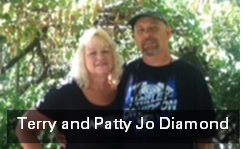
"A few days later, I was showering and stopped to pray that a better option would present itself," Terry recalled. "That very night, my wife, Patty Jo, learned about proton therapy and Loma Linda University Health while researching the Internet." When Terry reviewed the information that Patty Jo had found, including the ProtonBob.com website, he "knew right then" that this was the answer to his very specific prayer.
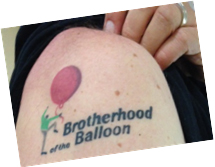
Terry scheduled a visit to Loma Linda. After his consultation, he needed no further encouragement. He canceled his surgery appointment and signed on as a proton patient. In fact, Terry was so excited about proton therapy and his later involvement with the BOB organization; he decided to have our logo tattooed on his arm! Terry told us, "I figure this tattoo will be a great conversation starter and a great opportunity to educate others about proton therapy."
Terry completed his treatment last month and said, "I cannot imagine what life would have been like had I gone with another treatment option. Proton therapy at Loma Linda was quite literally a radiation vacation."
We look forward to hearing about people's reactions to his unique tattoo. It certainly is a conversation starter.
BOB PowerPoint Presentation: Record Number of Requests
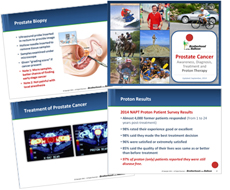
Last month, we informed members that the BOB PowerPoint "PPT" presentation has been updated to include new information about proton therapy, including the results of the 2014 National Association for Proton Therapy survey.
We received a record number of requests for the latest PPT"Deb's inbox was inundated with hundreds of emails. This tells us that more and more members are using the BOB PPT to help spread the word and educate others about proton therapy in their communities and/or as an aid in educating friends and family members about proton therapy for prostate cancer.
The BOB PPT is 62 slides, is also available as a PDF document, and available to all members"just send an email to Deb Hickey at [email protected] to request the electronic PPT or PDF version. "Note that we suggest using the PPT version so presenters can change/substitute slides with their own photos and stories to personalize the presentation."
The presentation is intended to 1" educate people on prostate cancer awareness, detection, and prevention; 2" help people understand the prostate cancer diagnosis; 3" provide an overview of the major treatment options; 4" provide information about proton therapy; and 5" encourage people to become educated and proactive in the treatment decision-making process. Detailed speaker's notes are included.
Another Great "and Easy!" Way to Spread the Word and Educate Others about Protons
If you were recently treated at the Loma Linda University Health Proton Treatment Center, you may have received a new "Patient Ambassador Kit." If you are being treated there, you will receive the kit upon your "graduation" from treatment. The purpose of the kit is to arm proton patients with information about proton therapy to share with their communities, friends, and family as they return home after treatment.
Many of our members feel compelled to talk about their experience of proton therapy" we hear from them every day. Loma Linda University Health has made this process easier for its patients.
Each Patient Ambassador Kit contains a contents page, which lists all of the materials within the kit and explains each one briefly. Contents include: Five Proton Contact Cards, five Frequently Asked Questions booklets, five "Why Loma Linda" pamphlets, one DVD, and one flash drive.
Proton contact card:
This 7-by-5-inch card includes information about proton therapy and the Loma Linda University Health Proton Treatment Center, a resource guide with URLs for important cancer-related websites and information on where to find clinical trials and study results.
FAQ booklet:
This six-page booklet answers some of the most common questions prospective patients might have about proton therapy, from what to expect during treatment on a daily basis and insurance issues, to how proton compares with other forms of radiation and surgery.
'Why Loma Linda' pamphlet:
This tri-fold document gives compelling reasons why a prospective patient should choose proton therapy and consider Loma Linda University Health for treatment. From general information about proton therapy and specific information about the technology Loma Linda University Health uses, to staff experience, research and safety practices"this well-designed document gets important points across in a clear and concise manner.
DVD:
This exquisite DVD takes you on an exciting journey through the James M. Slater, M.D. Proton Treatment and Research Center as well as the specifics of proton therapy treatment. It comes as close as it can to the real thing without actually setting foot in the facility. It is a must-watch for anyone considering proton therapy treatment.
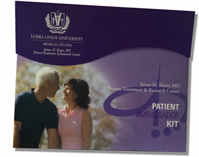
Flash drive:
The flash "or thumb" drive contains a PowerPoint presentation with a handful of educational slides about proton therapy.
How to get the kit:
If you'd like a Patient Ambassador Kit mailed to you, please send an email to Dr. Lynn Martell at [email protected].
making a difference by giving back
Please Support the Robert J. Marckini Chair
A "chair" is a term used to describe an endowment that provides a steady stream of income to fund the work of research scientists. Loma Linda University Cancer Center's James M. Slater, M.D. Proton Treatment and Research Center does not receive sufficient revenue from patient care to fund research. Life-saving research is dependent upon the caring and generosity of individuals and organizations through their philanthropic support. With funded chairs, the proton treatment center is able to attract and retain some of the best researchers. In addition, scientists are able to dedicate all of their time to research. Without endowment earnings, they could spend up to one-third of their time trying to raise money through grants to underwrite their work.
The interest from a chair's endowment will provide ongoing funding for one researcher. A chair can begin supporting research at the $2.5 million level, but ideally, chair funding should be at the $5 million level.
Two years ago, Bob Marckini received a great honor at a Loma Linda University Health board meeting when invited guest and BOB member, Chuck Kubicki, announced that an endowed chair was being named after Bob: The Robert J. Marckini Chair.
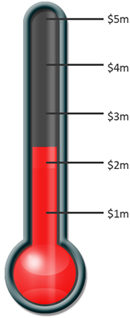
Since then, mostly through the generosity and caring of our membership, the funding level for the chair has reached $2,040,000. It is now $460,000 below the minimum funding level to be used for research.
We are nearing the end of the year, a time when many of us plan our charitable giving. It's also a time when some of us are faced with Required Minimum Distributions from our retirement savings plans. This is a terrific time to support charitable institutions that rely on gifts to do their important work.
We are often asked by members how they can express their thanks for the treatment they received. We tell them there are two things you can do:
- Tell your friends and acquaintances about proton therapy and the reasons it is the best treatment for localized prostate cancer. Consider using our PowerPoint presentation at local group meetings, such as support group meetings, Lyon's Club meetings, Rotary Club, church meetings, etc. Let the world know about proton therapy.
- Consider making a tax-deductible contribution to the Robert J. Marckini Chair for proton research.
Many important research programs at Loma Linda University Health are in need of funding. More and more tumor sites can be treated with protons when this research is completed. In addition, some non-cancer research programs are in need of funding, such as the important work Dr. James Slater is doing to find ways to use the proton beam to eliminate severe pain from major injuries our soldiers sustain from fighting in the Middle East, Complex Regional Pain Syndrome "CRPS".
In addition to your annual year-end giving, you may also want to consider directing a portion of your estate to the Marckini Chair. It's a very simple process. Bob and Pauline Marckini have done this, and as a result, they are members of the Loma Linda Heritage Society.
Research suggests that having a positive sense of purpose and an expression of goals can affect your well-being"even helping to fight disease. Can you think of a simpler way to improve your health than making a contribution to the organizations that are close to your heart?
If you have questions or would like help to make a gift or include Loma Linda and the Marckini Chair in your estate plan, please contact Todd Mekelburg: 909-558-4503 or email: [email protected]. Or contact Deb Hickey: [email protected].
Our friend, the late and legendary Ken Venturi, often said, "The world will not remember you for what you take from it, but for what you leave behind."
Please consider supporting the Robert J. Marckini Chair this year. Gifts can be made in honor of someone special in your life. They will be notified by mail that a contribution has been made in their honor.
Below are three ways to donate directly to the Marckini Chair.
- Send a check made out to "LLUMC Proton" to Loma Linda University Medical Center, Office of Philanthropy, P.O. Box 2000, Loma Linda, CA 92354. On the memo line write, "Marckini Chair."
- Donate online. Click the "Make a Gift" link at the far right.
- Call Elvia DeHaro: 909-558-5010.

Spend a Week in Palm Springs and Support Proton Research at the Same Time
BOB member Dave Vahlsing "Wynnewood, PA" is offering up his timeshare at the Marriott Desert Springs Resort in Palm Springs, CA, from December 13 through 20 to the first person willing to donate at least $1,500 to the Robert Marckini Chair for proton research at Loma Linda University Health. The unit is fully equipped with two bedrooms "sleeps six comfortably", and is worth $2,100 for this time frame.
"This would be great for someone who is going to be treated at Loma Linda University Health. They can stay here either before or after their treatment"or even during their treatment if they don't mind the hour drive," Dave said.
If interested, contact Dave: [email protected].
Tuesday Night Potluck Group Continues to Give Back
BOB member Clyde Marsh, and his wife Sylvia, have dedicated themselves to running the Tuesday night potluck dinners at the Loma Linda Springs apartments since Clyde's proton treatment in 2007. The dinners take place every week. Clyde's goal as "Mayor Emeritus" is to help patients and their families "step back from their medical situation" and take part in a fun night of food and fellowship.
The group also raises money for proton research. Recently Clyde, along with current proton patients David "mayor" and Jim "treasurer" presented a check for $1,000 to the Robert J. Marckini Chair for proton research at Loma Linda.
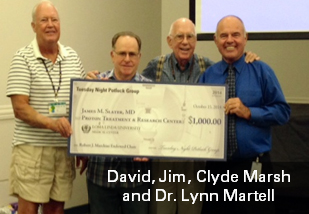
Matching Gift Promises to Double Yours
Don't forget" the Sequoia Foundation for Achievement in Culture and Education is encouraging fellow BOB members to match a $25,000 challenge grant. The foundation will match gifts of $1,000 or more to the Robert J. Marckini Chair, up to a total of $25,000, until December 31, 2014. Please consider taking this opportunity to double the impact of your gift!
How to Contribute to Proton Research at Loma Linda
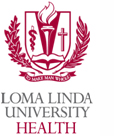
If you have questions about the various ways to support proton research efforts, please contact the Office of Philanthropy at LLUH at 909-558-3284 or send an email to Aaron Laudenslager at [email protected].
For more information on how to support the James M. Slater, MD, Proton Treatment and Research Center through an estate gift, contact Todd Mekelburg at the Office of Planned Giving by phone at 909-558-4553, visit the website at llulegacy.org, or email [email protected]. You can also donate directly online.
health
Foods That May Help Prevent Prostate Cancer
Denine Stracker, MPH, RD, is a Public Health Nutritionist. She recently published an article on Healthline about foods to eat to boost prostate health. In the article, she notes that high-fat, high-sugar Western diets may contribute to increased rates of prostate cancer, and suggests a number of "prostate-friendly super foods." Read about four of these foods below:

Tomatoes: Lycopene, a powerful antioxidant found in tomatoes, has been found to help prevent prostate cancer and reduce tumor growth. Cooked or pureed tomato products, such as tomato paste or spaghetti sauce, may be better options because Lycopene is more difficult for the body to extract from raw tomatoes.
Broccoli: Several studies have shown prostate cancer fighting benefits of eating broccoli and other cruciferous vegetables, such as cauliflower, cabbage, Brussels sprouts, kale, collard greens, and bok choy.
Legumes and Soybeans: Beans, peanuts, and lentils contain isoflavones, which may have cancer-fighting properties. Two studies found a 30 percent reduced risk of developing prostate cancer with high soy consumption. A study of men with prostate cancer showed a 12 percent decrease in PSA for those on a high soy diet.
Pomegranate Juice: For many years, the pomegranate has been touted as a "miracle fruit. " Numerous studies have shown benefits from drinking pomegranate juice ranging from possible prostate cancer prevention to slowing PSA doubling time, thus disease progression for those already diagnosed.
Consult Your Physician
It is always recommended that you speak with your doctor before making diet changes, especially if certain diet changes might interact with medications you may be taking.
Learn more about foods that may help prevent prostate cancer.
Ebola Explained DoctorOz.com
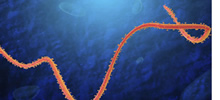
What is Ebola?
Ebola is a virus typically found in Africa. It lives in animals, though they are unaffected. When humans come into contact with these animals, they can be infected and spread the virus to other humans.
What are the symptoms and how is it diagnosed?
Initial symptoms include rash, significant weakness, muscle pain, and severe headache. As the virus progresses, those infected may experience high fevers, abdominal pain, and hemorrhaging, often in the form of bloody vomiting or diarrhea. Symptoms may appear from 2 to 21 days after exposure to Ebola.
There are a number of tests to diagnose Ebola within a few days of the onset of symptoms, which can detect the virus's genetic material or the presence of antibodies against the pathogen. Diagnosis is generally made with a blood test that measures the amount of virus circulating in a person's blood.
How is Ebola spread?
Ebola is spread through all bodily fluids, but the most common is blood because it can have high amounts of the virus and is often lost uncontrollably when those infected are most sick. Ebola cannot be spread through the air, so being in a closed space with someone who's infected is not dangerous. Additionally, those infected normally have to be symptomatic to be infectious.
Can Ebola be treated or prevented?
Prevention is key, as there is no FDA-approved vaccine available for Ebola. A study of a small outbreak indicated that typical sanitary precautions like hand washing and sanitizing, and/or glove use when dealing with the infected can dramatically decrease the risk of transmitting the disease. Other prevention techniques can be found on the Centers for Disease Control "CDC" website.
Symptoms of Ebola are treated as they appear "IV, balancing electrolytes, maintaining oxygen status and blood pressure". Experimental vaccines and treatments are under development.
Should I be concerned?
The short answer is no, unless you live in West Africa. Infection and death from the disease have been significant there because their health systems are not equipped to contain spread of the virus, and cultural factors often keep people from getting treatment.
This is not the case in the U.S. "and many other countries". While a few cases have made it to the U.S., they have all been imported. The only exception is the two nurses in Dallas who contracted the disease from a patient. It is unlikely an outbreak could threaten more than a few individuals given the need for direct, repeated contact with the infected.
Flu Season Worse for "Manly Men"
The flu season is upon us. And it turns out that men with high levels of testosterone seem to have a weaker response to the flu vaccine than men with low testosterone levels, according to researchers at Stanford University. An article in ShareCare titled "Why Manly Men are More Susceptible to the Flu" reported on this study.
It appears that testosterone, the hormone that fuels men's sex drive, beard growth, and muscle development, causes genes in the immune system to produce fewer antibodies in response to the flu shot. This tends to make the vaccine less effective, increasing a man's chance of coming down with the flu.
The article suggests five tips that could help you stay flu-free:
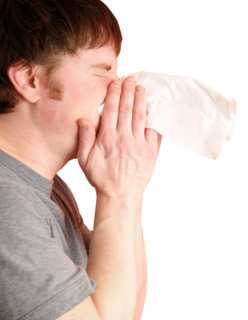
Practice proper hygiene: Wash hands frequently. Use hand sanitizer. Keep hands away from your eyes, mouth, and nose. Stay away from anyone who is sick.
Hit the hay: Get enough sleep "seven and a half to eight hours each night". It strengthens your immune system.
Increase your vitamin D level: If you live north of 32 degrees latitude, you could be low in vitamin D. Take supplements or eat vitamin D rich foods.
Stop stressing: Chronic stress suppresses your immune system and decreases your ability to fight infection.
Exercise: Take a walk. Every step you take strengthens your immune system, which helps prevent colds and flu viruses.
Series: Top 20 Most Common Health Questions "and Answers"
This summer, we began a series on the top 20 most common health questions "and answers" from Business Insider Magazine. Here is the sixth question on the list:
Is walking as effective as running?
Short answer: Yes. Studies have shown that how long you exercise"and thus how many calories you burn"is more important than how hard you exercise. Running is a more efficient form of exercise, but not necessarily better for you.
A six-year study published in the Journal Arteriosclerosis, Thrombosis, and Vascular Biology in April found that walking at a moderate pace and running produced similar health benefits, so long as the same amount of energy was expended.
the book
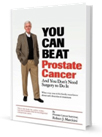
We now have more than 206 reader reviews on Amazon"more than any other book in the top 50! Here is an excerpt from what one reader recently had to say:

A Must Read for Prostate Patients … "John Wapple
My wife did all of the research [on treatment options] and was vehement that I go to Loma Linda [for proton therapy]. It was the best battle I ever lost. Everything in Bob Marckini's book was right on target. Proton therapy was like a great vacation and I've had great results. I thank Bob profusely for writing such a persuasive book that my wife and I received from Loma Linda"It made her resolute about proton therapy for my prostate cancer treatment.
Here is an email written to Bob Marckini from a new member:
You might be interested to know that my son's father-in-law, a successful medical doctor, was very skeptical about me having proton therapy. So, I loaned him your book on a recent visit. He read the entire book and now thinks I'm doing the right thing! I'll bet the book has had a similar effect on many guys. Thanks again for writing the book!
Did you find Bob's book helpful?
Please help us to spread the word and educate others about proton therapy. If you found Bob's book to be helpful in making your proton treatment decision, please post a review on Amazon.
Once you are logged into your Amazon account, click here and click the "Create your own review" button. NOTE: Reviews can be just a few sentences"it only takes a few minutes. And, don't forget to rate the book from 1 to 5 stars!
Don't have an Amazon account? No problem. Sign up here"it's free.
Available in Amazon's Kindle format, Barnes & Noble's NOOK Book, and Apple iBook format
Buy the Kindle version now for $9.99.
Don't have a Kindle? No problem"just download the free Kindle reading software for your smart phone or tablet.
Buy the NOOK Book version now for $9.99.
Don’t have a NOOK? No problem. Just download the free NOOK reading app for your Android smart phone, tablet, or iDevice.
Buy the book from the iTunes store for $9.99 for your iPhone, iPad, or iPod Touch in iBook format.
The hard copy version of You Can Beat Prostate Cancer is available online at Amazon, Barnes & Noble, and LuLu Press.
Proceeds from book sales are used to help fund BOB efforts and to support proton therapy research.
Ask about our bulk discount for hard copy books for anyone interested in spreading the word about proton therapy: [email protected]
odds & ends
Everything You Ever Wanted to Know About Proton Therapy
Nearly 25 years ago, Loma Linda University Medical Center opened the world's first hospital-based proton therapy center for cancer and other diseases. Since then, the hospital has studied and refined proton therapy, not only for patients with cancer and other tumors, but with an eye to using it to treat several other devastating diseases as well.
Loma Linda University Medical Center has treated many thousands of patients, and from that experience they have learned some fundamental lessons and have made many major discoveries.
Written by Dr. Jerry D. Slater, MD, this comprehensive article answers just about every question you could ever have about proton therapy–from why it was studied in the first place to how it works in extremely difficult situations to why many in the medical field still don't understand the benefits. If you have a family member, friend, or acquaintance who has questions about proton therapy but doesn't want to read an entire book or take the time to speak with others, suggest they read this article.
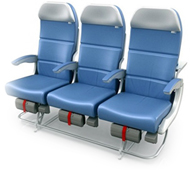
Airplane Seat Pockets–Yuck!
Here's another reason to skip the SkyMall magazine. A new study shows that illness-causing bacteria can survive on surfaces inside airplanes for days or even up to a week. Researchers at Auburn University found that methicillin-resistant staphylococcus aureus (MRSA) festered in the pockets on the backs of airplane seats for about a week. Beware of the armrest and tray tables too. A form of E. coli has been found to linger in these spots for days.
For protection you might want to carry a TSA-friendly hand sanitizer containing ethyl alcohol to clean your hands before you touch your face or eat.
Did You Know?
- Kites were used in the American Civil War to deliver letters and newspapers.
- The song, Auld Lang Syne, is sung at the stroke of midnight in almost every English-speaking country in the world to bring in the New Year.
- Drinking water after eating reduces the acid in your mouth by 61 percent.
- Peanut oil is used for cooking in submarines because it doesn't smoke unless it's heated above 450F.
- The roar that we hear when we place a seashell next to our ear is not the ocean, but rather the sound of blood surging through the veins in the ear.
on the lighter side
Last Month's Brain Teaser/Riddle
What do these words have in common"polish, job, and herb?
Answer: All three words are pronounced differently and have a different meaning when the first letter is capitalized.
Winner: Member John Boley "St. Louis, MO" was the first to submit the correct answer to last month's brain teaser. John was treated with proton therapy for his prostate cancer at Loma Linda in 2006 at age 66. His PSA has been at his pre-cancer baseline for many years. "I had very minor side effects for about two weeks following treatment, but since that time, I have to really pause to remember that I ever had cancer," John told us.
John credits his daughter for telling him about proton therapy and encouraging him to seriously investigate it. She learned about proton therapy from a friend of hers who had a friend who was treated with proton therapy for his prostate cancer. He had a great experience and highly recommended it. John told us, "I don't know anything else about him, but it is one of those coincidences that I consider a 'God moment.'"
"At the time of my diagnosis, I talked to a number of men about their experience with a whole range of radiation and surgical treatment options. All had varying degrees of bad news to share. So the follow-up calls that I made through the Brotherhood of the Balloon were a great relief. It was those conversations that reinforced my decision to NOT take my urologist's recommendation but to go the route of the ones who had 'been there' and 'done that,'" John said.
John also has a background in the nuclear navy so the theory of proton treatment was a flashback to his classroom at nuclear power school. He is a 1963 graduate of the U.S. Naval Academy, selected for the nuclear program and after graduation entered nuclear and submarine training. His first boat was the USS Chivo "SS-341" a conventionally powered submarine for qualification, and then the USS Tecumseh "SSBN-628", a nuclear powered missile submarine for the rest of his active duty. John remembers discussions of the Bragg Peak from the classroom so the theory of proton treatment made sense to him.
In the past eight years, John has encouraged several people to undergo proton therapy at Loma Linda. He and his wife are very active in the local community and love to travel. Last year, they visited the Great Wall.

Congratulations, John"your signed book is on the way!
New Brain Teaser/Riddle
What is the longest word in the English language with only one vowel?
Answer next month: The first to send an email to [email protected] with the correct answer will receive a signed copy of Bob's book. No cheating by using the Internet!
Do you have a favorite brain teaser or riddle? If so, send it to [email protected] and maybe we'll challenge our very intelligent members with it "giving you all the credit for sending it in, of course".
The Male Mind
A husband went to the police station to report his missing wife:
Husband: I've lost my wife; she went shopping yesterday and still has not come home.
Sergeant: What is her height?
Husband: Oh, five something.
Sergeant: Build?
Husband: Not slim … not really fat.
Sergeant: Color of eyes?
Husband: Never noticed.
Sergeant:: Color of hair?
Husband: Changes according to season.
Sergeant: What was she wearing?
Husband: Dress, maybe … or a suit … or jeans. I don't remember exactly.
Sergeant: Did she go in a car?
Husband: Yes.
Sergeant: What kind of car was it?
Husband: 2015 Corvette Stingray 3LT with the Z51 Performance Package, shark gray metallic paint, with the 6.2 litre V8 engine with Direct Injection generating 460 HP. 8-speed paddle-shift automatic transmission and GT bucket seats. It has a very thin scratch on the front left door … at this point the husband started crying.
Sergeant: Don't worry sir; we will find your car.
The Importance of Punctuation
An English professor wrote the words: "Woman without her man is nothing" on the chalkboard and asked his students to punctuate it correctly.
All the male students in the class wrote: "Woman, without her man, is nothing."
All the female students in the class wrote: "Woman: Without her, man is nothing."
Punctuation is powerful!
Quote of the Month
"The smallest deed is better than the greatest intention."
"John Burroughs
The Will
A farmer died leaving his 17 horses to his 3 sons. When his sons opened up the will it read:
My eldest son should get 1/2 "half" of total horses. My middle son should be given 1/3 "one-third" of the total horses. My youngest son should be given 1/9 "one-ninth" of the total horses.
As it's impossible to divide 17 into half or 17 by 3 or 17 by 9, the three sons started to fight with each other. So, they decided to go to a farmer friend who they considered quite smart, to see if he could work it out for them.
The farmer friend read the will patiently. After giving due thought, he brought one of his own horses over and added it to the 17. That increased the total to 18 horses.

Now, he divided the horses according to their father's will.
Half of 18 = 9. So, he gave the eldest son 9 horses.
1/3 of 18 = 6. So, he gave the middle son 6 horses.
1/9 of 18 = 2. So, he gave the youngest son 2 horses.
Now add up how many horses they have:
The eldest son has 9.
The middle son has 6.
The youngest son has 2.
The TOTAL is 17.
Now this leaves one horse over, so the farmer friend took his horse back to his farm. Problem solved.
Moral: The attitude of negotiation and problem solving is to find the 18th horse, i.e., the common ground. Once a person is able to find the 18th horse the issue is resolved. It is difficult at times. However, to reach a solution, the first step is to believe that there is a solution. If we think that there is no solution, we won't be able to reach any!
Low PSAs to all,
Bob Marckini and Deb Hickey
You can download this month's BOB Tales in PDF format to your computer by "right-clicking" ("control-clicking" on Mac) and going to the "Save Target As… " option on the menu that pops up.
NO MEDICAL ADVICE: Material appearing here represents opinions offered by non-medically-trained laypersons. Comments shown here should NEVER be interpreted as specific medical advice and must be used only as background information when consulting with a qualified medical professional.
